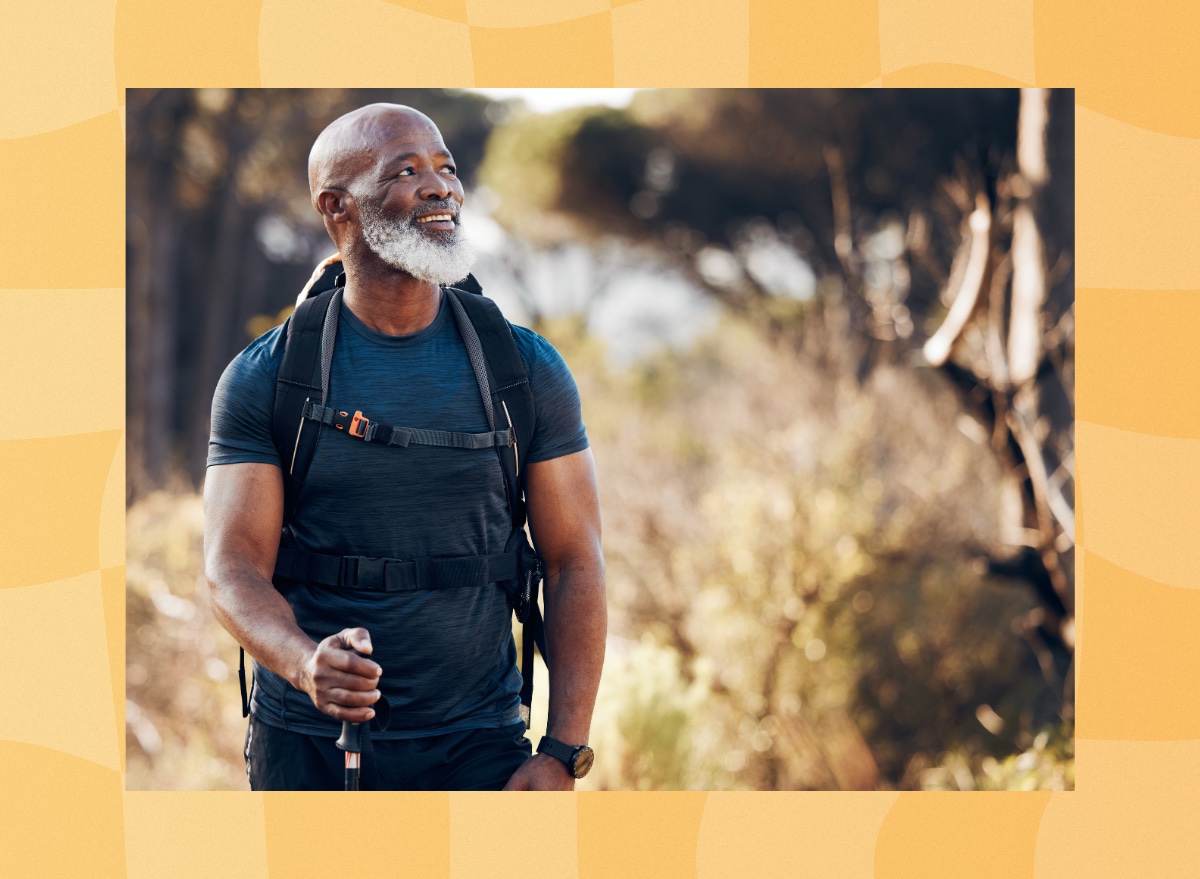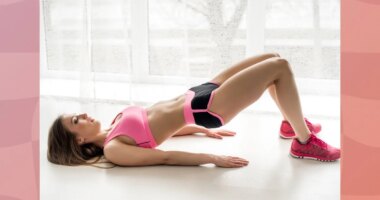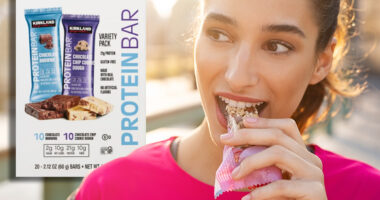Hiking is a beloved hobby that’s good for the mind, heart, and body. Whatever time of year, a scenic trail can provide a vigorous cardio workout with varied terrain or a light dose of aerobic exercise. The distance and speed can be whatever you choose. For the hiker whose main goal is weight loss, there are several steps you can take to maximize your hiking workout for weight loss and bump up the calorie burn.
Hiking is a great form of exercise for many because it doesn’t always feel like you’re working out. However, it’s an incredible way to shed some excess pounds.
“Hiking is helpful for weight loss because it is a way that you can burn more calories. Burning more calories means you’ll burn fat more easily,” explains Domenic Angelino, CPT and author from the International Personal Trainer Academy (NPTA). “Hiking is also an activity that is easy to make social. This can make exercise way more tolerable. You can grab a friend and go on a mini hiking adventure together. Plus, hiking works solo as well. So you can still enjoy it even if you’re not planning to go with a friend.”
Now, lace up your hiking boots and let’s dive into how you can maximize your hiking workout for weight loss to achieve the best results possible.
Gradually increase the duration of your hikes.
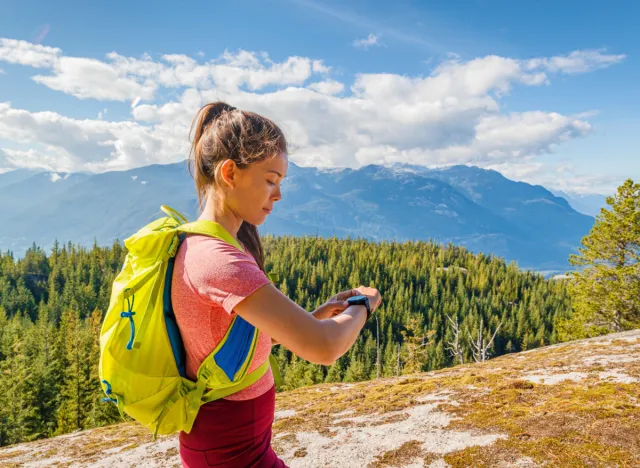
If you want to get the biggest bang for your hiking efforts, plan a longer hike whenever possible. This will be easier to do as you progress, get into better shape, and feel more comfortable hiking in general. “This will translate to burning more calories and losing more fat,” Angelino points out.
Going the extra distance is important because you want to torch more calories than you consume daily in order to lose weight. “Ideally, you want to burn between 250 and 1000 more calories than you eat each day,” Angelino tells us. “This would translate to losing weight at a rate of half a pound to two pounds per week. When thinking about this, it’s also important to factor in how many calories your body burns from just being alive, as well as other non-exercise activities.”
Choose a hilly route whenever possible.
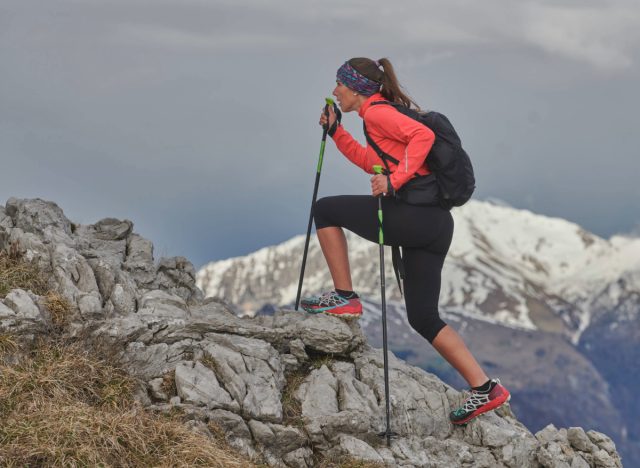
The hiking trails you choose can make a major impact on your overall results. “If you hike in an area with lots of hills and steep inclines, you will engage your muscles more during your hike,” Angelino explains. “Your muscles require energy to contract, so this translates to you burning even more calories to support the extra effort those muscles are putting forth. Burning more calories means losing more weight.”
After you complete a downhill stretch, you’ll be able to put more effort into the uphill portion, compared to a trail that has a steady incline the entire stretch. “This would function much like interval training, which can result in increased calorie burn compared to steady-effort training,” says Amanda Capritto, a certified personal trainer, sports nutrition coach, and functional training specialist.
Wear a weighted backpack or rucksack.
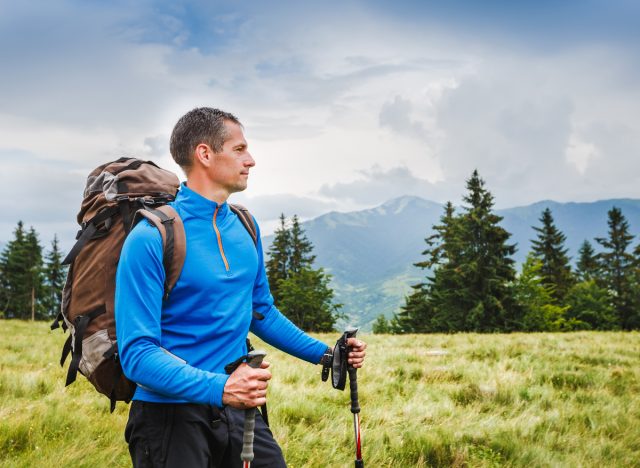
Rucking is all the rage right now—and for good reason! In order to increase the calorie burn during your hike, consider wearing a rucksack or weighted backpack. Just be sure whatever you choose isn’t too heavy.
“If [your rucksack is] too heavy, it can cut your hike short,” says Angelino. “If it’s so heavy that you need to take a break after a short period of time, you’ll burn less calories overall. It can be helpful to use added weight, but only a little bit, to avoid your plan backfiring.”
Try to exceed your previous hike performance.
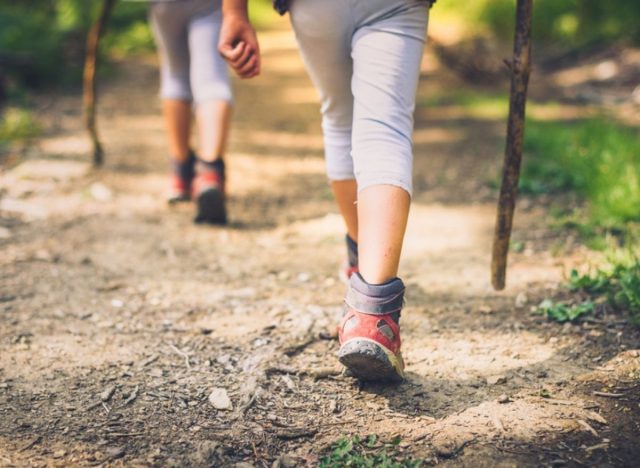
Competition adds some spice to life and can motivate you to do better. For instance, the quicker you walk during your hike, the greater the number of calories you’ll burn.
“A fun way to gamify your walking speed is to just try to finish your hike faster than the previous time you did it,” Angelino suggests. “If you completed your hike in 42 minutes last time, try to aim for at least 41 minutes and 59 seconds. As you get in better shape and become more familiar with the route, it’ll get easier and easier to finish faster.”
Hydrate, hydrate, hydrate.
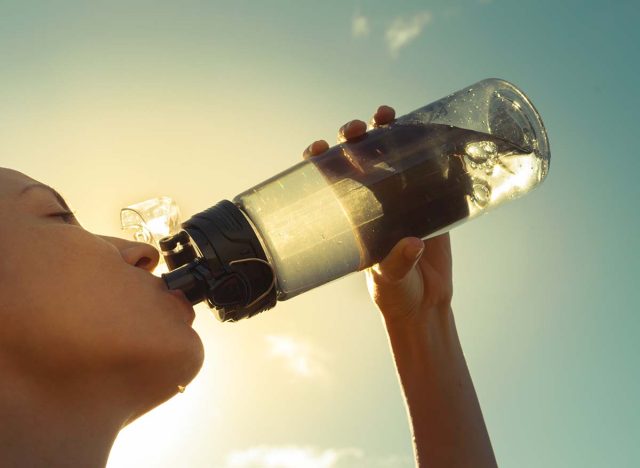
Bring plenty of water on your hike, as it’s important to replenish the fluids you’re sweating out.
“Your body can be a big limiting factor in how long you hike,” Angelino explains. “If it causes you to stop hiking, you’ll burn less calories overall. That’s why it’s important to bring plenty of water with you. You want to [ensure] you drink just enough water to replace whatever fluids you lose from sweat during your hike. This will help you stay hydrated, [allowing] you to hike longer.”
Pack some healthy snacks.
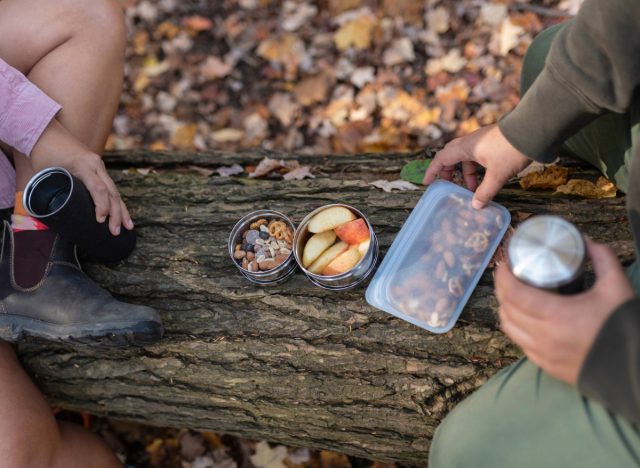
You’ll need energy to fuel your body and enable you to complete your planned distance.
“When you put yourself in a situation that burns plenty of energy, you can give yourself a second wind by taking in a moderate amount of carbs through a healthy snack,” Angelino tells us. “This can extend the duration of your hiking workout, [leading] to more weight loss overall.”
Now, we’re not talking about eating more than you’d normally eat, as that would be counterproductive. Simply make sure you have healthy snacks at the ready and adapt your diet and calories accordingly.
Capritto recommends packing whole-food carb sources like fruit, along with snacks that are high in protein, such as beef jerky, which will aid in the recovery process. Healthy fats such as seeds and nuts are good choices as well, as they’ll fuel your body with sustained energy on your hike.
Be sure to wear comfortable, appropriate hiking footwear.
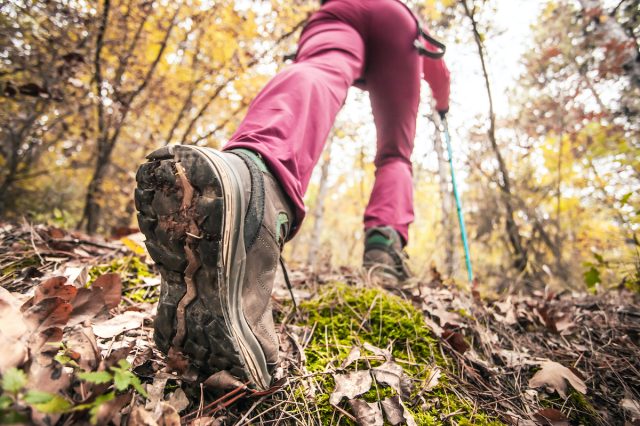
Happy feet mean a happy hiker. It’s essential to make sure you wear shoes that’ll be comfortable and durable for your hikes.
“Shoes should be thick enough to prevent you from feeling discomfort when stepping on sharp rocks,” Angelino stresses. “They should also have enough traction to keep your feet from slipping, which can be important if your hike involves walking over large, smooth rocks at any point.”
Dress accordingly for the weather conditions.
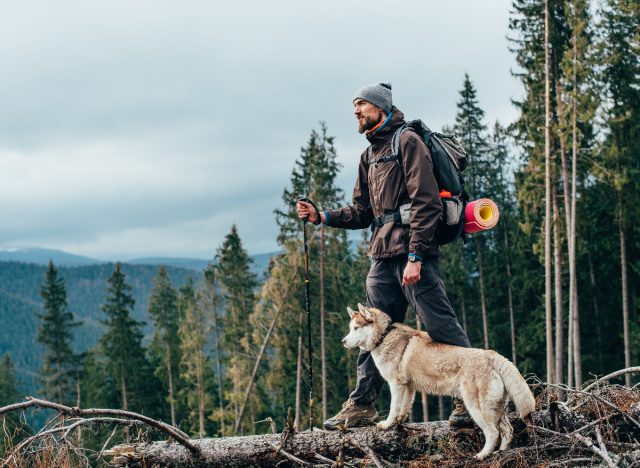
What you wear can massively impact how long you can be outdoors hiking. Whether it’s an extra chilly or sweltering day, dress accordingly. That means cool clothes for hot weather and warm clothes when it’s cold. Although this may sound like an obvious tip, it’s one that’s easily overlooked.
“Make slight adjustments to your wardrobe to best reflect the temperature outside,” says Angelino. “In the heat, this can limit the amount of sweating you do, which reduces your overall fluid loss—making the hike more tolerable. In the cold, this simply keeps you warm.”
Add sprints where the terrain permits.
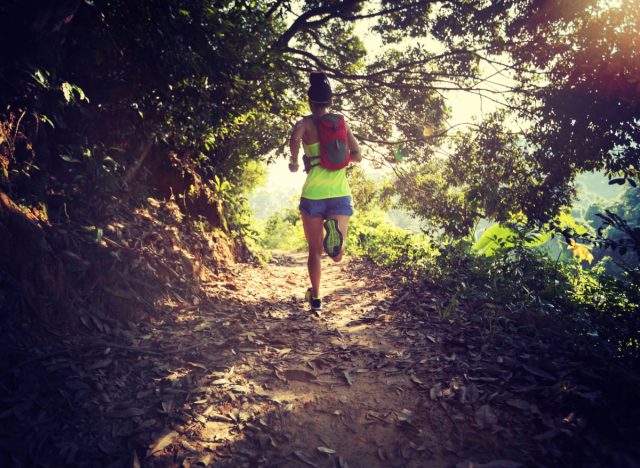
Adding sprints to your route can quickly increase the fat-burning process much more effectively. There’s no rule that says a hike has to be walked! Just make sure the terrain allows you to sprint safely and that you have the right footwear for sprinting.
“If there is a long stretch of stable, high-traction, and safe ground with minimal-to-no tripping hazards, you can totally sprint through that portion of your hike,” Angelino offers. “Intermittent sprints during the parts of your hike that are appropriate for sprinting can both increase weight loss and improve your overall cardiovascular health more than normal hiking would.”
Swap out a workout for a hike to switch things up.
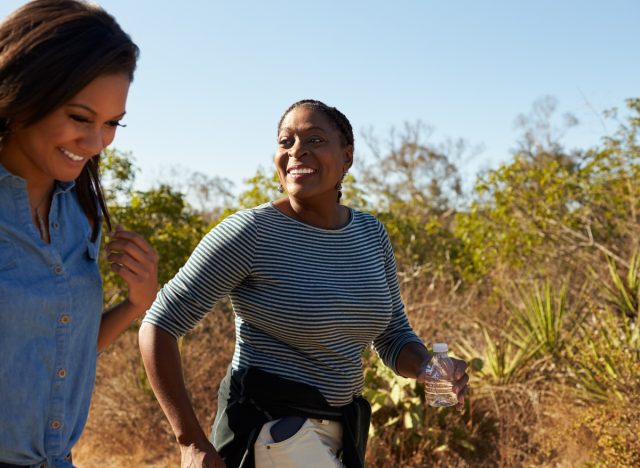
We’ve all had days when we’re sick of the gym and don’t want to go. If hiking solo or with a friend sounds like a much better idea, don’t feel guilty—just go for it!
“[Hiking is] better than not working out at all and will burn more calories when compared to skipping your workout altogether,” Angelino says. “This will help you achieve your fat loss goals even faster.”

